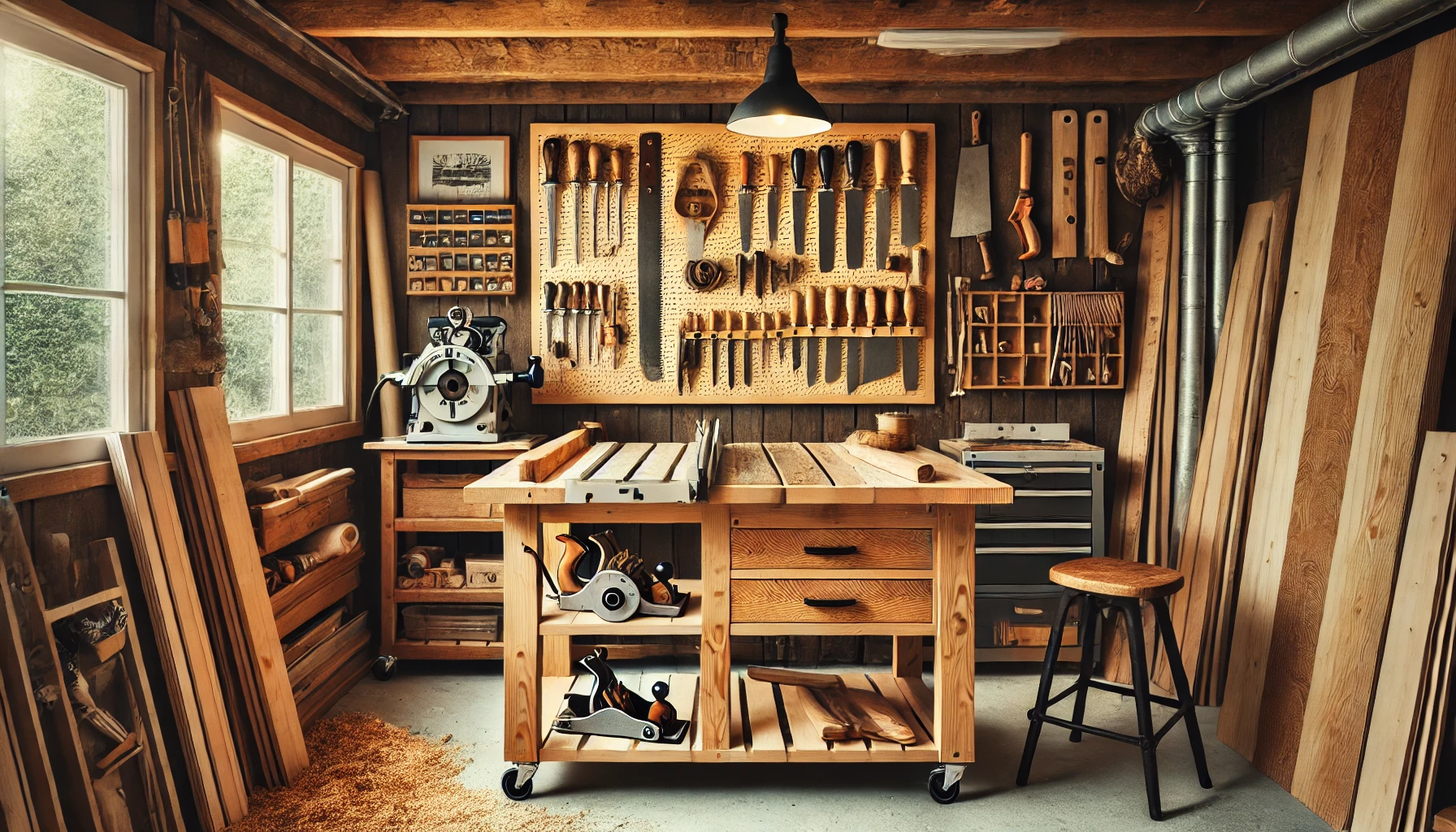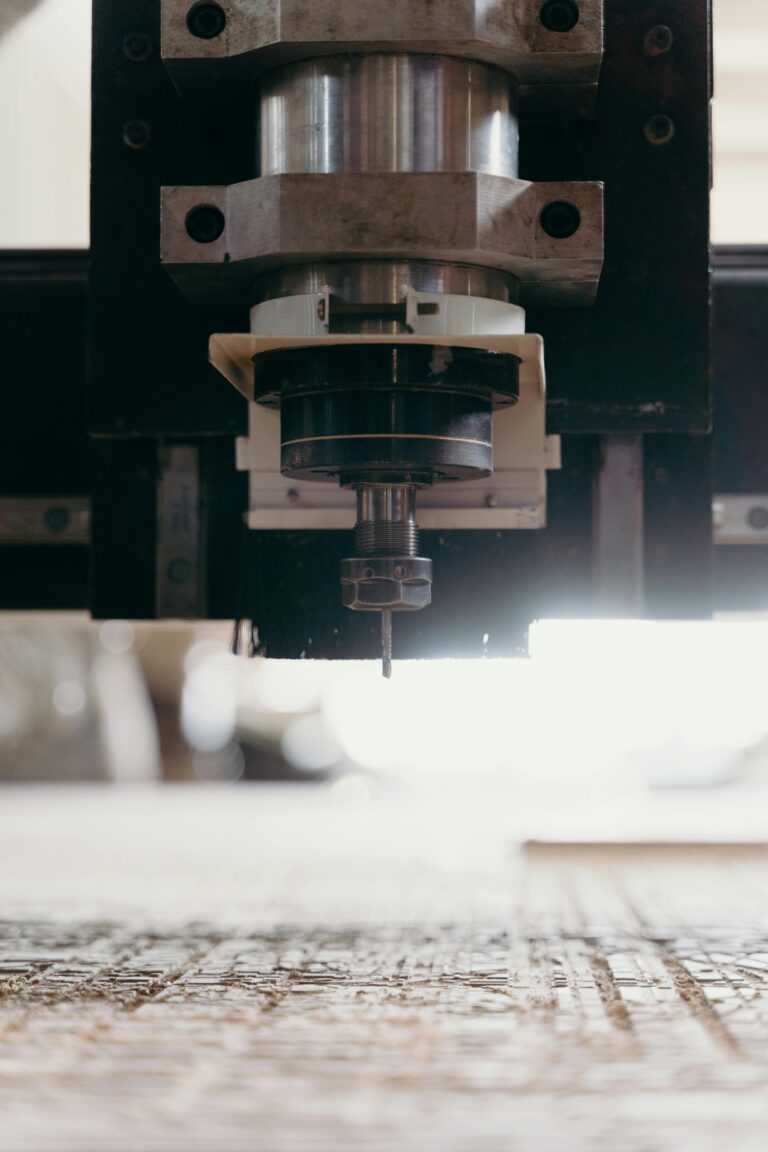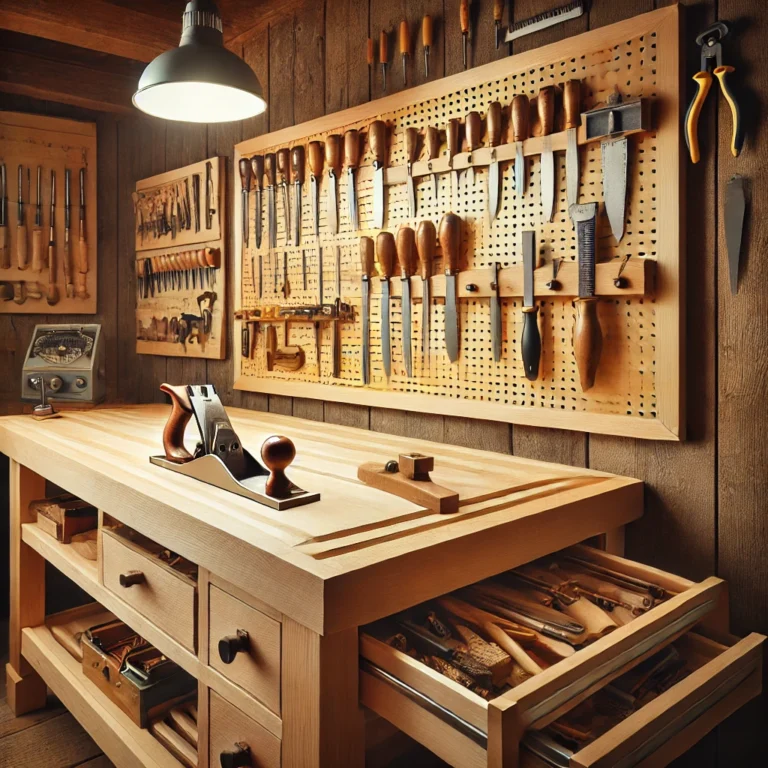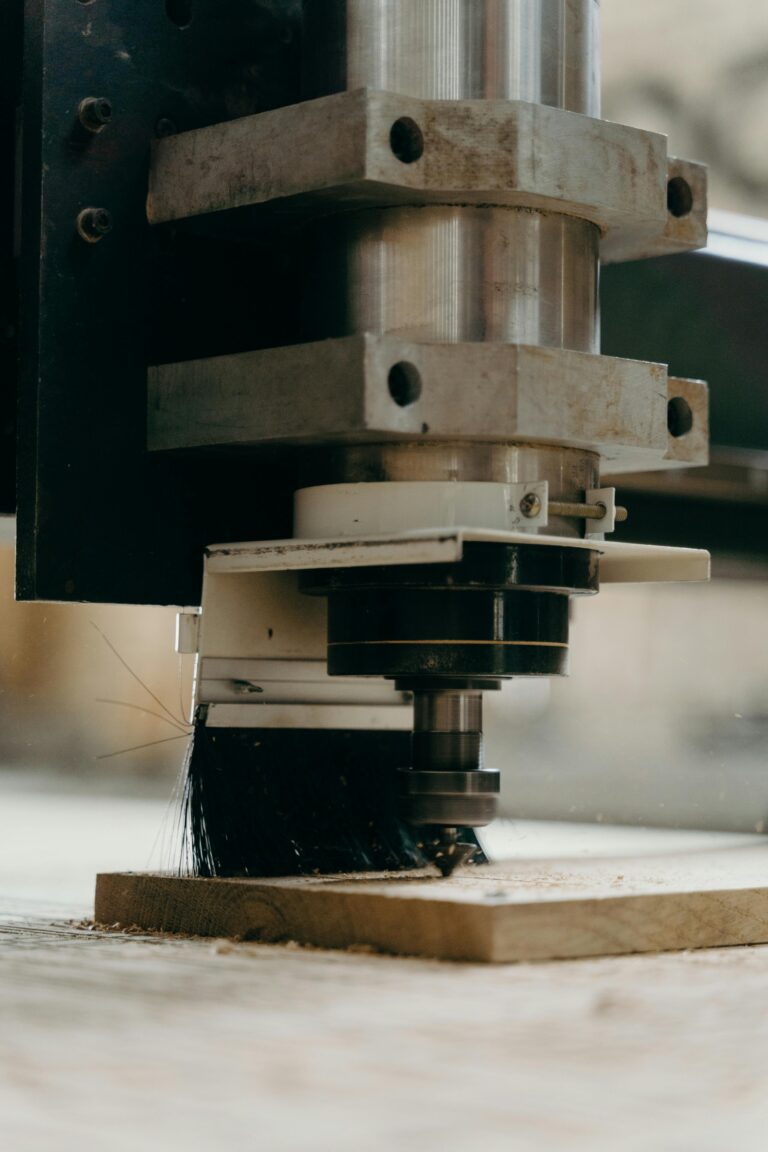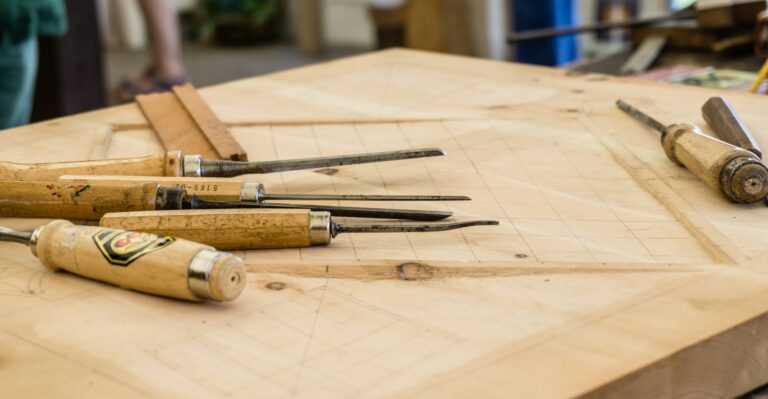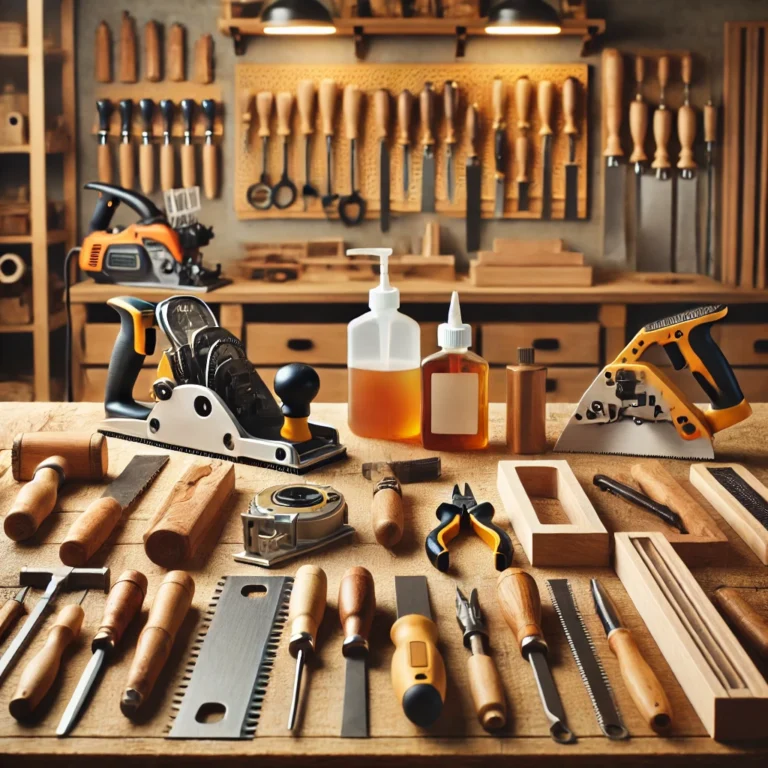10 Smart Small Woodworking Shop Ideas to Maximize Space in 2024
Discover 10 smart small woodworking shop ideas to help you maximize space, organize tools efficiently, and create a productive work environment in 2024.
Introduction:
If you’re passionate about woodworking but are limited by space, you’re not alone! Many woodworkers struggle with how to set up their dream workshop in tight areas like garages, basements, or small sheds. But don’t worry—there are plenty of creative ways to make the most of a small woodworking shop. In this article, we’ll explore clever design solutions, space-saving tools, and efficient layouts that can turn your small shop into a well-organized and productive space. Whether you’re a seasoned craftsman or just starting out, these small woodworking shop ideas will help you maximize your space in 2024!
Plan Your Layout for Maximum Efficiency
- Start with a clear vision:
Before setting up your small woodworking shop, sketch a detailed plan. Measure the space, noting the dimensions of each wall and floor area. Once you know how much space you have, consider the tools and storage you’ll need, such as workbenches, tool cabinets, and shelves. This initial step can save time and help you avoid unnecessary purchases or rearrangements later. - Create defined work zones:
Divide your workshop into distinct zones: one for cutting, another for assembly, and one for finishing. This way, you can keep everything organized and reduce the number of times you need to move large items. Defining work areas ensures that your workflow is smooth, even in limited space. - Utilize vertical space:
Wall-mounted shelves, pegboards, and tool racks are game-changers for small shops. Instead of cluttering your floor with tools and materials, take advantage of vertical storage. Hanging items like clamps, hand tools, and smaller power tools keeps your workspace clear and improves accessibility.
Choose Compact, Multi-Functional Tools
- Invest in multi-purpose tools:
When space is tight, it’s crucial to invest in tools that offer multiple functions. For example, a combination table saw and router can perform the tasks of two separate tools while occupying half the space. Look for other dual-use tools, such as jointer-planer combos, which are ideal for smaller shops. - Opt for benchtop versions of large tools:
Benchtop versions of traditionally large tools, like drill presses, table saws, and band saws, can save a ton of space. These smaller, portable versions can be stored away when not in use, freeing up valuable work areas. Make sure to select models with enough power and capacity to handle your projects. - Mobile tool stands:
Tools that are mounted on mobile carts or stands can be moved out of the way when not in use. This flexibility allows you to reconfigure your shop on the fly, depending on the task at hand, without losing efficiency.
Build a Fold-Down Workbench
- Space-saving solution:
A fold-down workbench attached to a wall is a brilliant way to save space. When it’s not in use, you can simply fold it up, leaving more room to move around your shop. This design is perfect for small shops where floor space is at a premium. - Customizable size:
The beauty of a fold-down bench is that it can be custom-sized to fit your specific needs. You can build a narrow bench for small projects or a larger one if your space allows. Adding storage shelves underneath or pegboards above can make this area even more functional. - Durability considerations:
Ensure that the materials and hinges used for the fold-down bench are sturdy enough to handle the weight of your projects. Heavy-duty wall mounts or collapsible brackets are essential for maintaining stability, especially when working with heavier wood materials.
Utilize Pegboards and Wall Storage
- Organize your tools efficiently:
Pegboards are incredibly versatile for organizing hand tools like hammers, wrenches, and screwdrivers. By mounting a pegboard on the wall, you’ll have easy access to your tools without cluttering your workbench or floor space. This is an ideal solution for smaller shops where every inch of wall space counts. - Custom tool arrangements:
One of the best things about pegboards is their flexibility. You can easily rearrange hooks, baskets, and shelves as your tool collection grows or changes. This adaptability makes pegboards a long-term solution for keeping your workspace tidy. - Add labels:
For even better organization, consider labeling your tool hooks and shelves. This simple step saves time by ensuring you know exactly where each tool belongs, reducing clutter, and increasing efficiency.
Optimize Lighting and Ventilation
- Brighten your workspace:
A well-lit shop is essential for precision and safety. If your small workshop has limited natural light, consider installing LED overhead lights, which are energy-efficient and provide excellent illumination. Task lighting, such as adjustable lamps, can be added to specific work areas for additional brightness. - Ventilation for safety:
Good airflow is critical in any woodworking shop, but it’s especially important in small, enclosed spaces. Installing a simple exhaust fan or opening windows can help reduce dust and fumes. You may also want to invest in a dust collection system to keep the air clean and your workspace free from harmful particles. - Use light colors for walls:
Light-colored walls can help reflect natural and artificial light, making your space appear larger and brighter. Consider painting your shop with light shades of gray, white, or cream to enhance the sense of openness.
Create Custom Storage Solutions
- Modular shelving units:
Custom-built storage shelves can fit your shop’s specific dimensions and tool needs. You can add cubbies for smaller items, drawers for hand tools, and open shelves for larger pieces of equipment. Modular shelving units can be rearranged or expanded as your collection of tools grows. - Overhead storage:
Don’t overlook the space above your head! Overhead storage racks can hold long pieces of lumber or infrequently used materials, keeping them out of the way but still accessible. Just make sure that whatever you store up high is easy to reach and not too heavy. - Magnetic strips for small tools:
Magnetic strips mounted along walls or workbenches are perfect for organizing small metal tools like drill bits, pliers, and wrenches. They keep items visible and easily accessible, reducing the time spent searching for the right tool.
Invest in a Dust Collection System
- Improve air quality and safety:
Even in a small shop, dust collection is vital for maintaining good air quality and a safe working environment. A compact, portable dust collector can efficiently capture sawdust and wood shavings, reducing the risk of respiratory issues and keeping your workspace cleaner. - Prevent tool damage:
Dust buildup can affect the performance of your power tools by clogging motors and vents. By incorporating a dust collection system, you’ll extend the lifespan of your tools and avoid costly repairs. - Keep it portable:
A small, portable dust collection unit can easily be moved between workstations, making it perfect for small woodworking shops where space is limited. These systems are often compact enough to tuck under a workbench when not in use.
Conclusion:
Setting up a small woodworking shop can be challenging, but with the right approach, you can maximize every inch of space and create an efficient, enjoyable work environment. From planning your layout to investing in multi-functional tools and incorporating clever storage solutions, there are plenty of ways to optimize your shop for productivity. Try out some of these ideas and turn your small woodworking space into a workshop that rivals even the largest of setups. Ready to get started? Start planning your shop layout today and experience the benefits of a well-organized, space-saving woodworking workshop.
